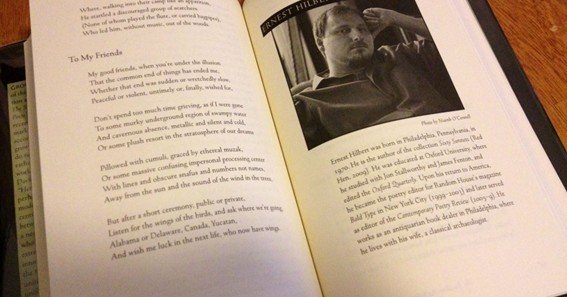When was the poem Domestic Situation by Ernest Hilbert made? While exact composition dates often remain private to the writer, this poem is widely associated with Hilbert’s debut collection, Sixty Sonnets, published by Red Hen Press in 2009. Some sources suggest it may have appeared in literary journals slightly earlier, but 2009 is commonly recognized as the year when the Domestic Situation became broadly available to the reading public. Below, we discuss its context, style, and why it continues to resonate with poetry enthusiasts.
A Brief Look at Ernest Hilbert
Ernest Hilbert (b. 1970) is an American poet, critic, and editor whose work blends formal structure with contemporary sensibilities.
- Educational Background: Hilbert earned a Ph.D. in English Literature from Oxford University, informing his scholarly yet accessible style.
- Editorial Roles: He has served as editor for literary publications and specialized rare book firms, contributing to his deep engagement with the historical breadth of poetry.
When Was the Poem Domestic Situation by Ernest Hilbert Made?
Reiterating the focus keyword: When was the poem Domestic Situation by Ernest Hilbert made? Most references place its first significant publication in 2009, featured in Hilbert’s Sixty Sonnets. Though the exact date of composition is not publicly documented, many of the poems in that collection were written in the mid-to-late 2000s. Since then, Domestic Situation has been noted by critics and poetry lovers for its wry, intimate exploration of everyday life—captured through a modern take on traditional sonnet form.
Themes and Style of Domestic Situation
- Contemporary Sonnet Form
- Hilbert often employs the structure of a 14-line sonnet but adjusts the rhyme scheme and meter to suit modern cadences and vocabulary.
- Domestic Situation exemplifies this blend of tradition and innovation, pairing Shakespearean echoes with modern insights.
- Everyday Relationships
- As its title suggests, the poem delves into the complexities, humor, and tensions within household or familial dynamics.
- Personal details evoke universal feelings, making it relatable to a wide audience despite its formal backbone.
- Subtle Irony and Wit
- Hilbert’s characteristic wit surfaces in the interplay between the poem’s formal constraints and the sometimes raw or playful subject matter.
- This tension between craft and candidness gives the Domestic Situation a vibrant immediacy.
- Emotional Underpinnings
- Beneath the polished lines lies an undercurrent of warmth, occasionally tinged with frustration or longing.
- The poem invites readers to reflect on shared human experiences—love, conflict, compromise—within the intimate space of home.
Why Domestic Situation Matters
- Modernizing a Classic Form: Hilbert’s poems illustrate how the sonnet can remain fresh and incisive in the 21st century.
- Accessible Yet Layered: Readers new to poetry appreciate the directness of language, while seasoned poets admire the structural artistry.
- Literary Recognition: Although Hilbert’s work might not be as universally known as some contemporaries, he maintains a dedicated following among poetry circles, journals, and academic settings.
FAQ
- Who is Ernest Hilbert?
Ernest Hilbert is an American poet, editor, and critic. He holds a Ph.D. from Oxford and has published several collections, including Sixty Sonnets and Caligulan. - When was Domestic Situation first published?
The poem is typically credited as part of Hilbert’s 2009 collection, Sixty Sonnets, although some pieces from that collection appeared in literary magazines prior to the book’s release. - What is Domestic Situation about?
It focuses on everyday interactions—often humorous or tense—within personal relationships. The poem’s modern sonnet form underscores the blend of tradition and contemporary insight. - Is Domestic Situation a traditional or free-verse poem?
It’s a modern take on the sonnet, maintaining elements of structure (like 14 lines) while bending or playing with rhyme and meter to fit modern language. - Where can I read or purchase Hilbert’s poetry?
You can find Ernest Hilbert’s collections, including Sixty Sonnets, through Red Hen Press, online booksellers, or academic libraries that stock contemporary poetry.










